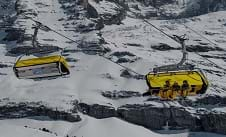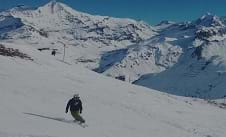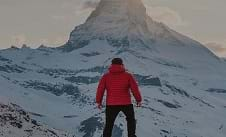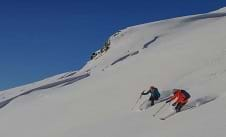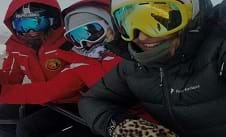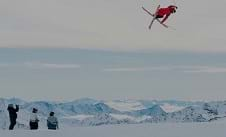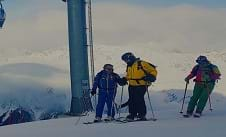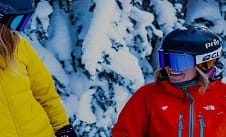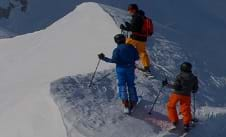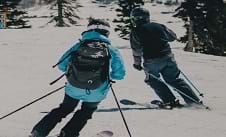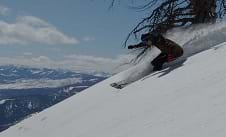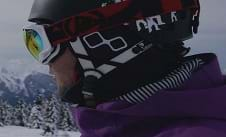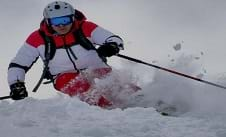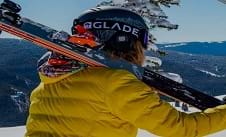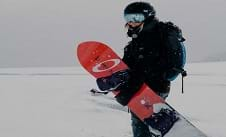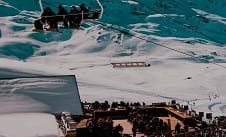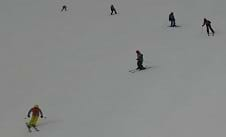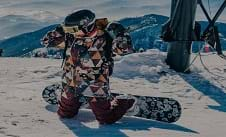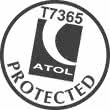Ski accessories guide
Whether you are new to skiing or an off-piste pro, having the correct ski gear keeps you safe and protected from the elements whilst enjoying your time on the slopes. With so much choice out there it’s hard to know where to begin. We’ve put together this guide to help you choose the right ski gloves, ski socks and headwear for your ski holiday. Don’t forget to read our ski jacket and ski pants guides too.
If you are completely new to skiing or snowboarding, read our ski packing checklist first to find out what basics you need for a ski holiday. Generally, you cannot rent ski clothing or accessories in ski resorts. You can only rent skis, ski boots, poles, snowboards, snowboard boots and helmet. So you will need to borrow or buy the rest of your ski gear before your trip to the mountains. This includes a ski jacket, ski pants, goggles, ski gloves, ski socks, hat, mask/buff and thermals. Don’t leave this till you are in resort as the selection will be limited and prices at a premium.
with your own travel concierge. Don’t hesitate to drop us a line – we’ll
help plan your perfect Ski Holidays.
020 7770 6888 ← online or call ↴
020 7770 6888
Ski gloves & mittens
Ski gloves need to keep your hands warm and protect you from the snow. Generally, there is no difference in ski gloves or snowboard gloves. Most gloves will be labelled ‘ski gloves’ but will be for snowboarding too.
The 2 main styles of gloves and mittens are short-cuff or long-cuff. Both types provide suitable protection from the cold. Choosing between them comes down to if you would prefer to wear your glove cuffs under your jacket sleeves (short-cuffs) or cuffs that fit over your jacket sleeves (long-cuffs). To test out ski gloves or mittens, visit a ski retailer like Snow & Rock or Elis Brigham who will have a great choice of different styles for you to find out what your preference is.
You can purchase some insanely cheap ski gloves from the likes of Aldi, or Decathlon, from as little as £3.99. The quality of these may be questionable, but there is no doubt that they will do the job.
If circulation is not your body’s strong point, then it would be worth investing in a decent pair of gloves that will guarantee to keep your hands cosy. One of the best types of gloves is Hestra Army Leather Heli Ski Gloves, the crème de la crème of ski gloves, boasting interchangeable liners with varying thicknesses to choose from on the level of warmth you require. They are pricey, costing around £100, but are worth splashing the cash on if you’re serious about your skiing, and your hand. It’s important to do your research on your ski gloves and worth trying them on for size too.
Many skiers and boarders opt for mittens, as these provide extra warmth, and you can slot a handy handwarmer in for a surge of heat on your digits. Make sure you buy waterproof gloves or mittens with a fair amount of insulation, other top brands are Burton, Dakine and Colombia.
Ski Hats
Choose a hat that can protect against the elements. Polartec and Windbloc offer the best specially blended fabrics that provide maximum weather protection to keep you warm and dry. You can purchase these products from Alpine Trek, and they will set you back around £25-£30. There are also plenty of beanies and bobble hats available from high street stores, but these may have less weather protection.
It’s not recommended to wear hats or beanies under a helmet as your helmet should fit properly on your head to protect. Also, your helmet should sit low on your forehead with no gap between your helmet and goggles. Most helmets should be lined and insulated enough to keep you warm but if you want more warmth, look at helmets with liners and removable ear sections.
Ski socks
Ski socks aren’t just to keep your feet warm; they can help avoid pressure from ski boots and irritation around your toes. They are one of the most understated items of your ski and snowboard gear and can make a difference when you are on the slopes. Ensure you have the right size, a quality fabric, the right fabric weight for your preference, and any additional cushioning or support you may need, such as cushioning on your toes, ankle, and shin. Women’s ski socks tend to have a shorter leg then a men’s, but it is not essential to get gender-specific ski socks.
Smartwool has a great range of top-quality socks, such as the PHD Ski Sock. These cost around £20 for one pair and can be purchased in Elis Brigham. Why not treat yourself to a fancy pair of heated socks for those icy cold days? Lenz Heat 1200 socks are a fantastic invention and include battery-powered heating which can be adjusted on your mobile phone - technology at its finest! For a pair of these bad boys, the price starts at a hefty £190. There are cheaper alternatives to be found though, so have a look on Amazon.
Other excellent ski sock brands include Salomon and Icebreaker, which offer material resistant to odour and cushioned toes. Great deals on ski socks can be found in TK Maxx and Decathlon.
Snowboarders may opt for thicker socks as snowboard boots aren’t as tight as ski boots, but it’s mainly down to preference – do you want warmer or more lightweight socks? Do you require extra padding on your toes or around the top of the boots to prevent rubbing? If you can, try to test out socks with your boots. If this isn’t possible, we recommend choosing a mid-range pay of socks with cushioning and support on pressure points, which should cost around £15-20.
Ski buff, masks & balaclavas
A ski balaclava covers the head, neck, and face, leaving just the eyes visible. They are great under your helmet, in cold weather and to keep the snow off your face. A ski mask is similar to a balaclava but tends not to cover the mouth and nose.
The type of neck and face protection you choose will depend entirely on personal preference. The time of year you're going skiing and the location will also impact your choice as the weather can vary drastically. Ensure your face/neck covering is not too tight, and often buffs have neck gaiters which is a fabric that is worn around the neck and can also cover your mouth and nose. Avoid cotton as this will retain moisture and be cold against the skin. Other trusty brands to find the perfect face and neck warmers include Smartwool, Skida, Blackstrap, Phunkshun.
An Icebreaker merino neck tube is where it's at. These beauties don't lose their shape, are made from the trusty merino, and keep you warm. Arc'teryx has a unisex balaclava made from engineered polyester, which is excellent for moisture management.
Ski accessories FAQ:
Mittens rely on keeping your fingers together to retain body heat (though some do have internal finger pockets) so they tend to be the warmer option. This depends on gloves/mittens of a similar standard as quality construction and materials will have a marked effect on performance.
Gloves win for movement and dexterity. You can also get hybrid style mittens like the ‘lobster’ with a separate index finger to the rest of the mitten to make tasks like opening your jacket/bag or adjusting bindings easier.
Most manufacturers have a recommended sizing guide and a method for measuring your hand to get the right size (great if buying online). In general, measuring your hand circumference just below the knuckle (this should be the widest point but don’t include the thumb), is a fairly standard measurement. One last aside: if you’re worried about warmth, consider picking up some heated gloves.
Here are a few general rules:
- Gloves should be a snug fit around the fingers, with a little bit of slack at material (0.5cm-1cm) the fingertip when fingers are stretched out.
- The palm should be covered fully. Usually, the cuffs go down past the wrist.
- Make sure you can make a fist (as you would holding a pole etc.). If you can’t, the gloves are too tight.
- Take into account your preference - do you like roomier gloves? Do you wear glove liners?
You can get ski masks online very easily at a variety of price points, alternatively try out in store at Snow & Rock, Elis Brigham or Decathlon. Most ski rental shops in resort will have them available for purchase if you forget to pack one.
Ski tube socks are long socks with minimal seams at key areas like the heels and toes to minimise rubbing. They’ll be made of warm materials such as wools blends and extend past the cuff of your boot into your ski trousers for additional comfort and pressure relief.
For a week’s trip, you can get away with 2-3 pairs, but really it’s down to preference and space. Drying socks overnight is easy enough, but there are few things worse than cold sweaty socks in the morning.
If you have your own properly fitted boots then you might find standard socks/sport socks fine- it’ll be a matter of preference. For the majority of people renting boots (or lower-end models), ski socks help with comfort a lot. Our recommendation? Don’t leave home without them.






